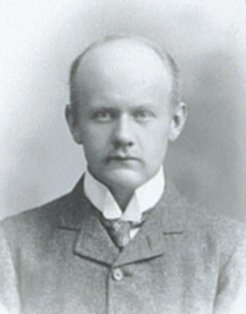Nevil Sidgwick facts for kids
Quick facts for kids
Nevil Sidgwick
FRS
|
|
|---|---|
 |
|
| Born | 8 May 1873 Oxford, England
|
| Died | 15 March 1952 (aged 78) Oxford, England
|
| Nationality | English |
| Alma mater | Christ Church, Oxford University of Tübingen |
| Known for | Valency |
| Awards | Royal Medal (1937) Longstaff Prize (1945) Fellow of the Royal Society |
| Scientific career | |
| Fields | Chemistry |
| Institutions | University of Oxford |
| Doctoral advisor | Hans von Pechmann (University of Tübingen) |
Nevil Vincent Sidgwick FRS (born May 8, 1873 – died March 15, 1952) was an English chemist. He was very important in helping us understand how atoms connect to each other. This is called valency and chemical bonding.
Contents
Nevil Sidgwick: A Chemistry Pioneer
Nevil Sidgwick was born in Oxford, England. He was the older of two children. His father, William Carr Sidgwick, was a lecturer at Oriel College, Oxford.
Early Life and Education
Nevil first went to Summer Fields School. After a year, he moved to Rugby School in 1886. He was very smart and won a scholarship to study Natural Science at Christ Church, Oxford.
He did incredibly well, getting top grades in science in 1895. Then, he did something very rare: he also got top grades in "Greats" (a study of ancient history and philosophy) in 1897.
Even though he was good at many subjects, science was his main passion. He traveled to Germany to work in famous chemistry labs. He earned his DSc degree in 1901 for his research on certain chemical compounds.
In 1901, Sidgwick became a Fellow at Lincoln College in Oxford. He lived and worked there for the rest of his life.
Discovering Chemical Bonds
Sidgwick became very interested in how atoms are built and how they stick together. This is called atomic structure and chemical bonding. He helped explain how atoms form special connections in coordination compounds.
He also showed how important the dative bond is. This is a type of chemical bond where one atom shares a pair of electrons with another atom.
Understanding Valency
Working with his students, Sidgwick also proved that hydrogen bonds exist. These are weaker bonds that form between molecules. They are very important in biology and chemistry. Because of his great work, he was made a Fellow of the Royal Society in 1922. This is a big honor for scientists in the UK.
Exploring New Ideas
In 1927, Sidgwick came up with the idea of the inert pair effect. This explains why some heavier atoms in the periodic table are more stable with fewer bonds than you might expect.
Later, in 1940, he worked with Herbert Marcus Powell. They connected the shape of molecules to the number of electrons around the central atom. These ideas were later developed into the VSEPR theory. This theory helps us predict the 3D shapes of molecules.
Travels and Global Connections
Sidgwick's important research made him famous around the world. He traveled a lot for science meetings. In 1914, he sailed to Australia for a meeting. On that trip, he met famous physicist Sir Ernest Rutherford. Sidgwick admired Rutherford greatly.
He also traveled to Canada in 1924 and explored much of the western part of the country. In 1929, he went to South Africa and then to places like Zanzibar.
In 1931, he spent a semester teaching at Cornell University in the United States. He loved his time there, saying the lab had "every luxury." He had multiple offices, phones, and even a personal assistant! After his stay, he took a long trip across the western US, visiting places like Yellowstone National Park.
He continued to visit the United States in the 1930s and later. His last trip was in 1951, where he visited the American Chemical Society meeting in New York. He also got to see the Oak Ridge National Laboratory.
Nevil Vincent Sidgwick passed away in Oxford on March 15, 1952. He was never married.
Important Books and Roles
Sidgwick wrote several important books that helped explain his ideas to other chemists. He also held important positions in scientific societies.
His Key Books
- The Organic Chemistry of Nitrogen (1910)
- The Electronic Theory of Valency (1927)
- Some Physical Properties of the Covalent Link in Chemistry (1933)
- The Chemical Elements and their Compounds (1950)
Leading Chemistry Groups
- Baker Lecturer at Cornell University, USA (1931)
- President of the Faraday Society (1932-1934)
- Vice President of the Royal Society (1935-1937)
- President of the Chemical Society (1935-1937)
Lasting Legacy
Nevil Sidgwick's contributions to chemistry are still recognized today. The Sidgwick Laboratory and Sidgwick Close at the University of Oxford were named after him. This shows how much his work meant to the world of science.

